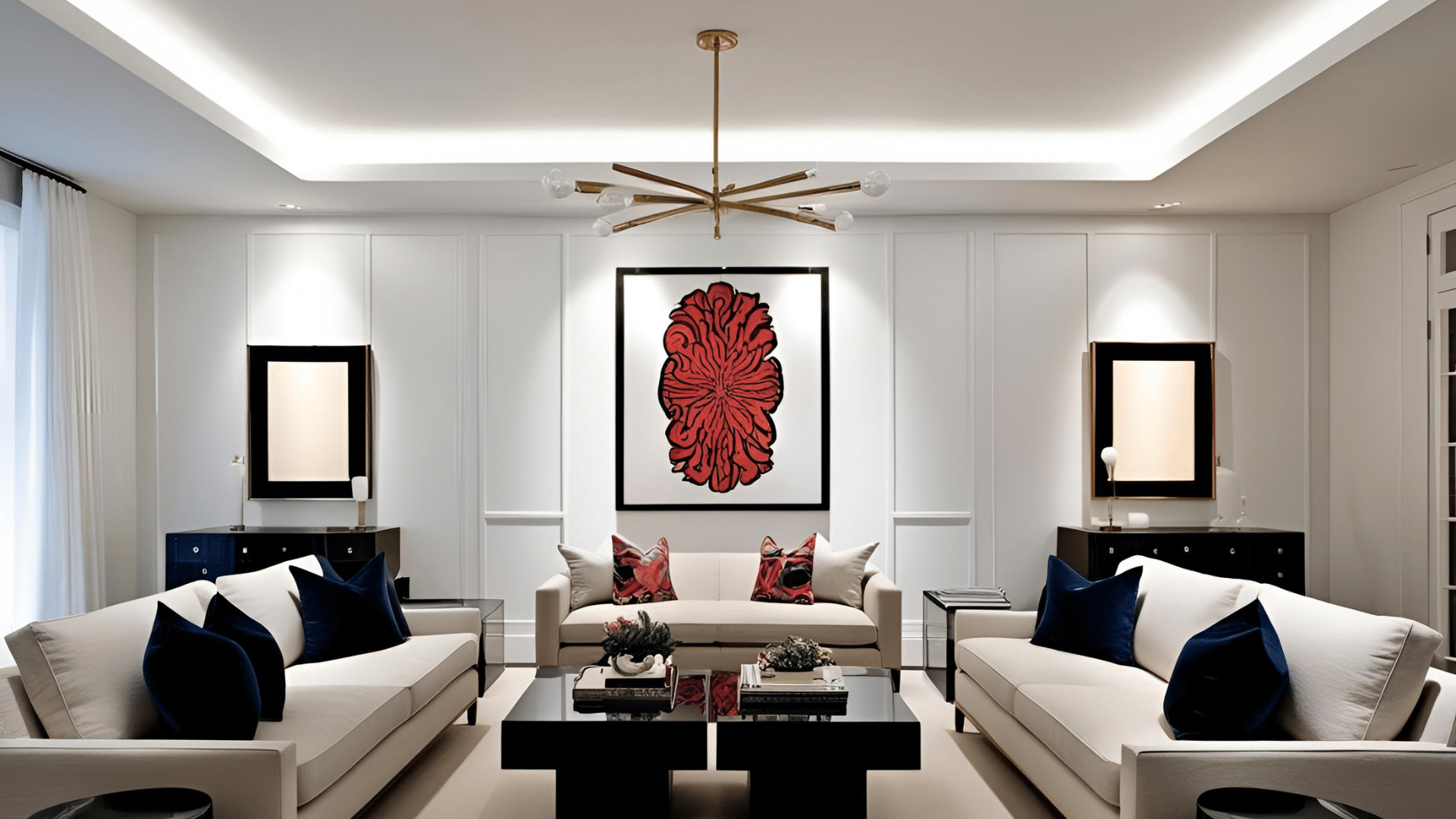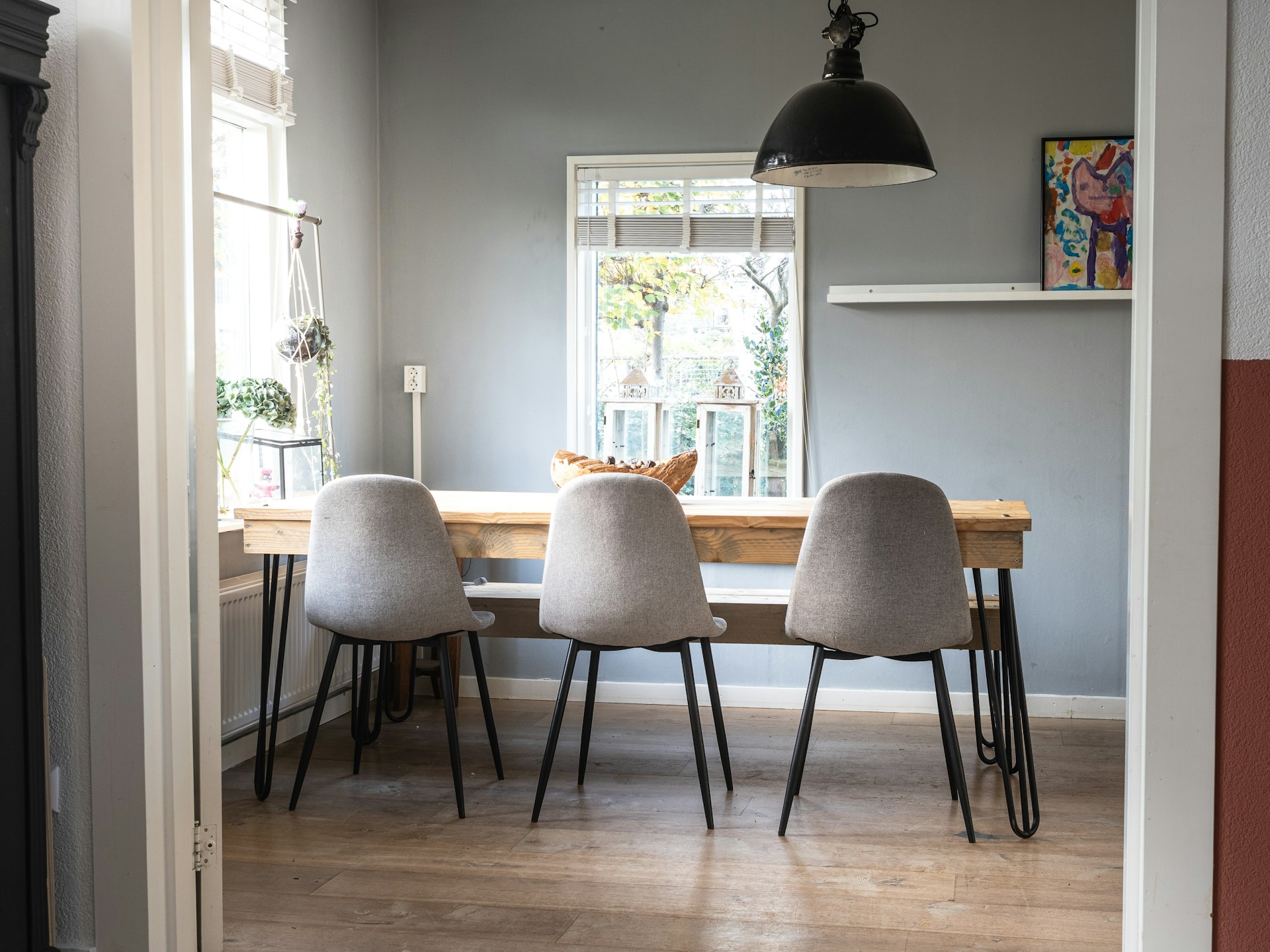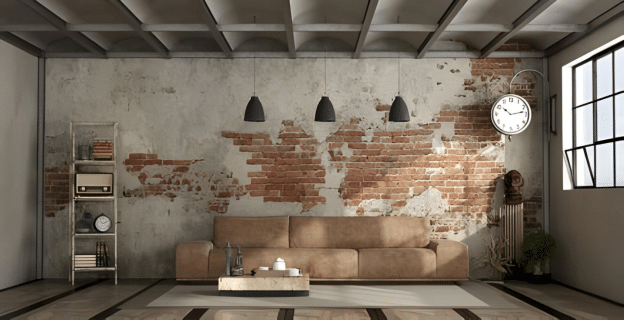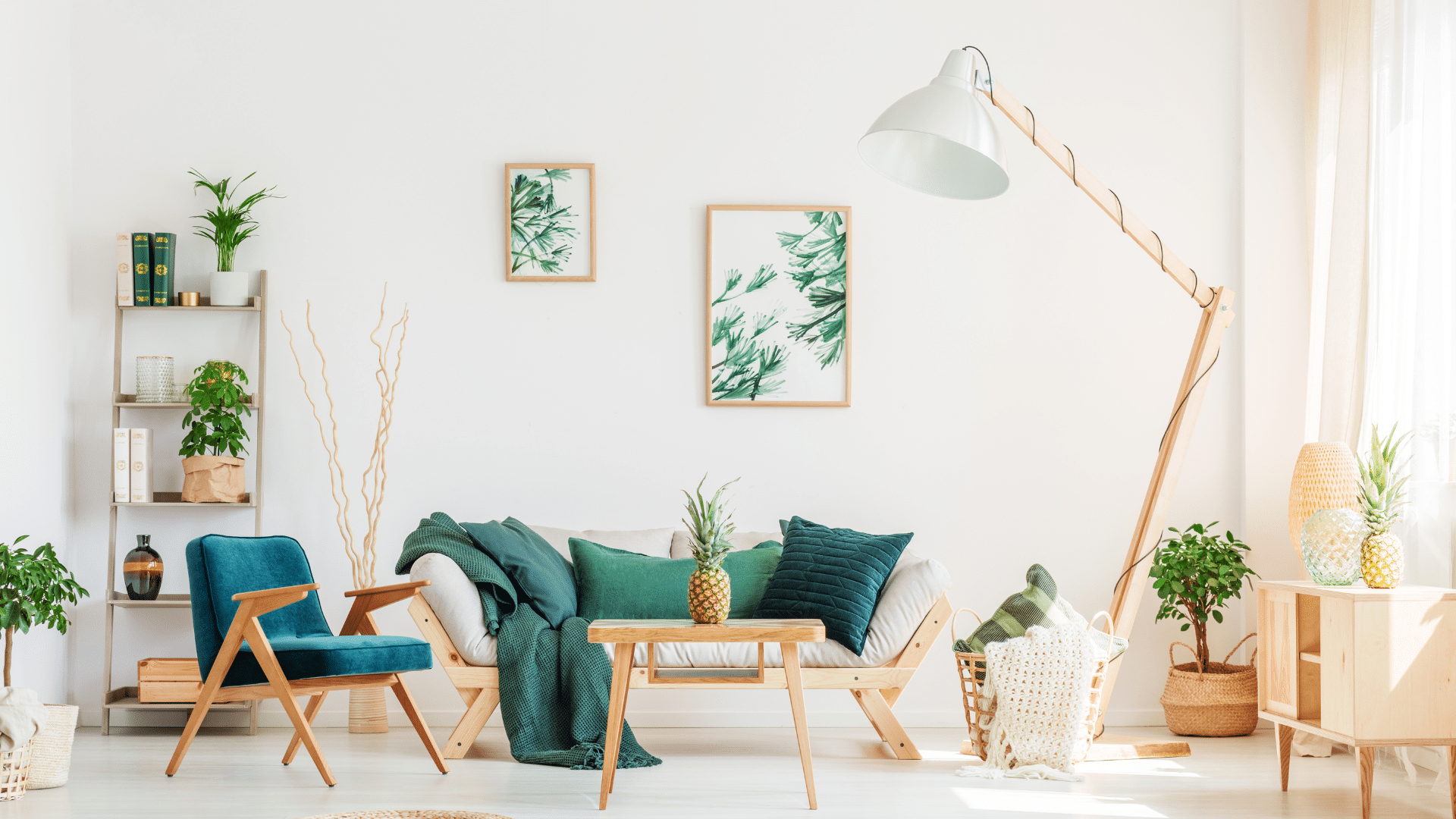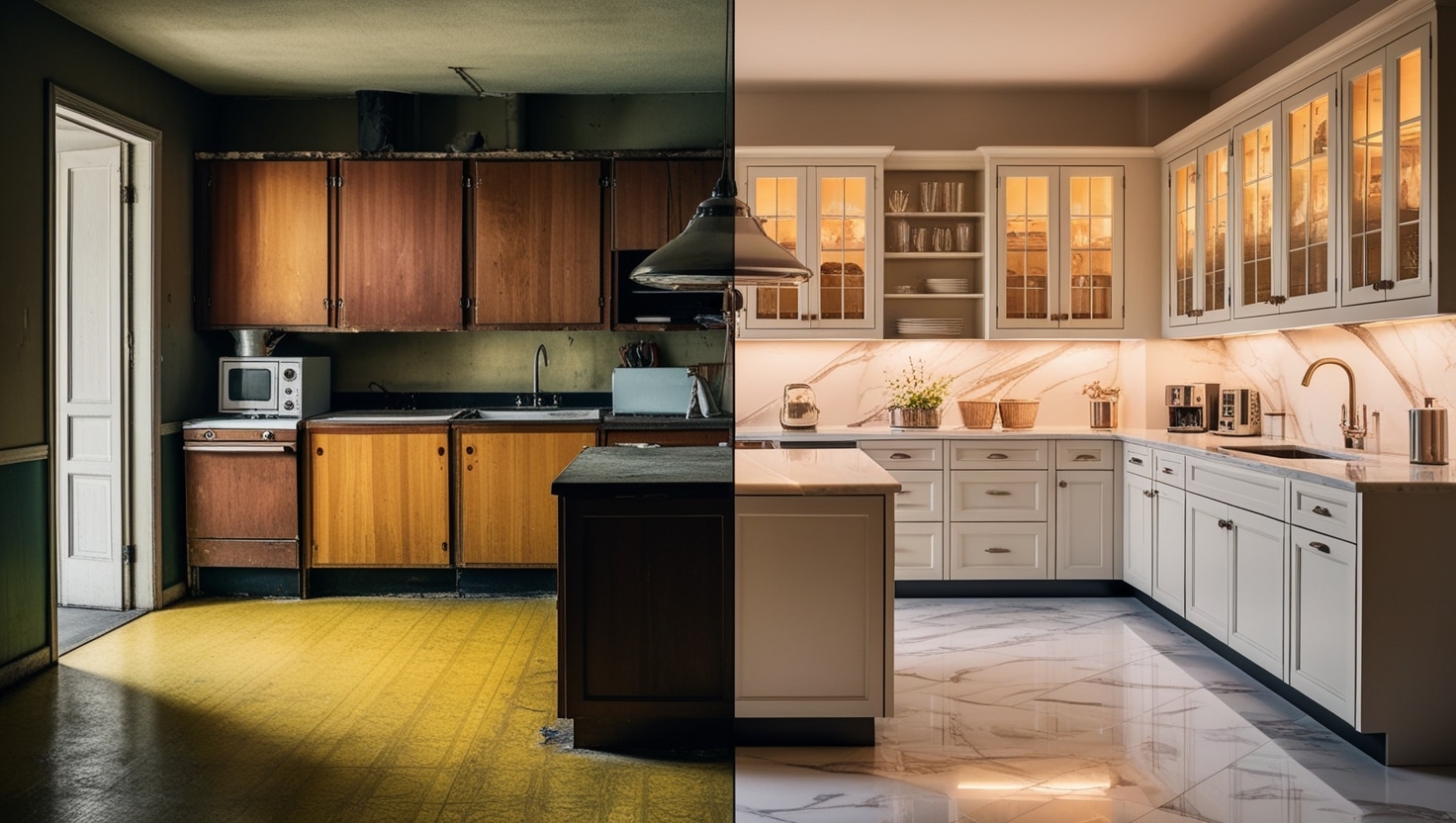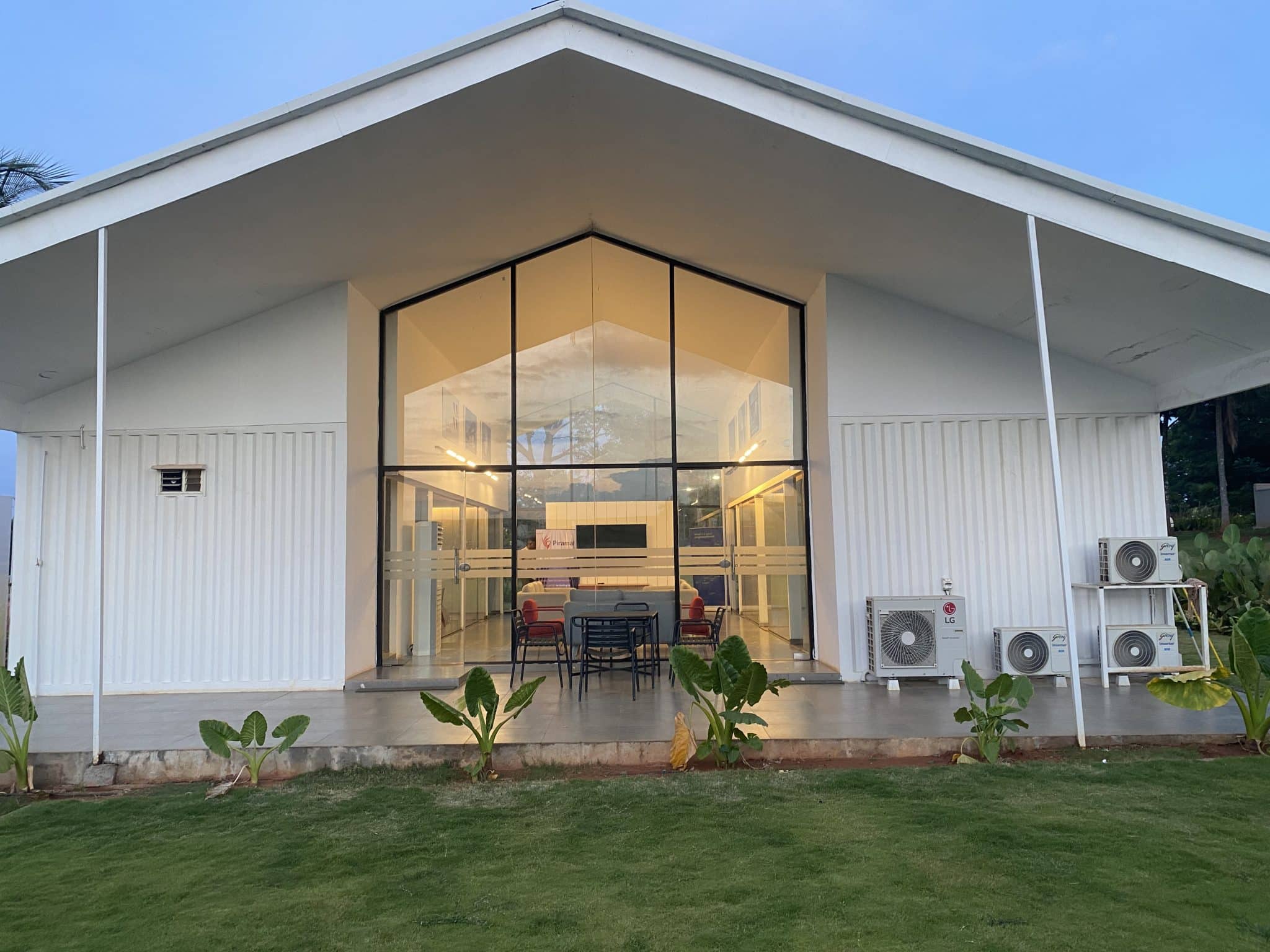Emphasis in a Room: The Key to Eye-Catching Design
Have you ever walked into a room and found your eyes immediately drawn to a stunning feature?
That’s emphasis at work – the design principle that creates visual interest and modifies ordinary spaces into memorable ones.
Many homeowners struggle with rooms that feel flat, disjointed, or lacking personality. Without a clear focal point, spaces appear unfocused and fail to make an impact.
The strategic emphasis, whether through color, furniture, lighting, or architectural elements, brings harmony and character to any space.
In this guide, you’ll learn practical techniques to create powerful focal points in every room.
Understand the psychology behind emphasis, and learn to balance attention-grabbing features with overall room harmony.
Understanding the Principle of Emphasis in a Room
Emphasis in interior design is a fundamental principle that creates focal points within a space, drawing the eye and commanding attention.
It establishes a visual hierarchy—telling viewers where to look first and guiding them through the room.
When you create emphasis, you’re establishing a visual road map.
The emphasized element becomes the star, while other elements play supporting roles. This creates spaces that feel intentional rather than random.
Emphasis works alongside other design principles for cohesive interiors.
Balance ensures your focal point doesn’t overwhelm you, while harmony connects the emphasized element to the rest of the room.
Proportion determines how dominant your focal point appears, and rhythm creates a flow between primary and secondary components.
Successful rooms strike a perfect balance where emphasis creates interest without sacrificing cohesion—telling a complete design story rather than just making a statement.
Why Does Every Room Need a Focal Point?
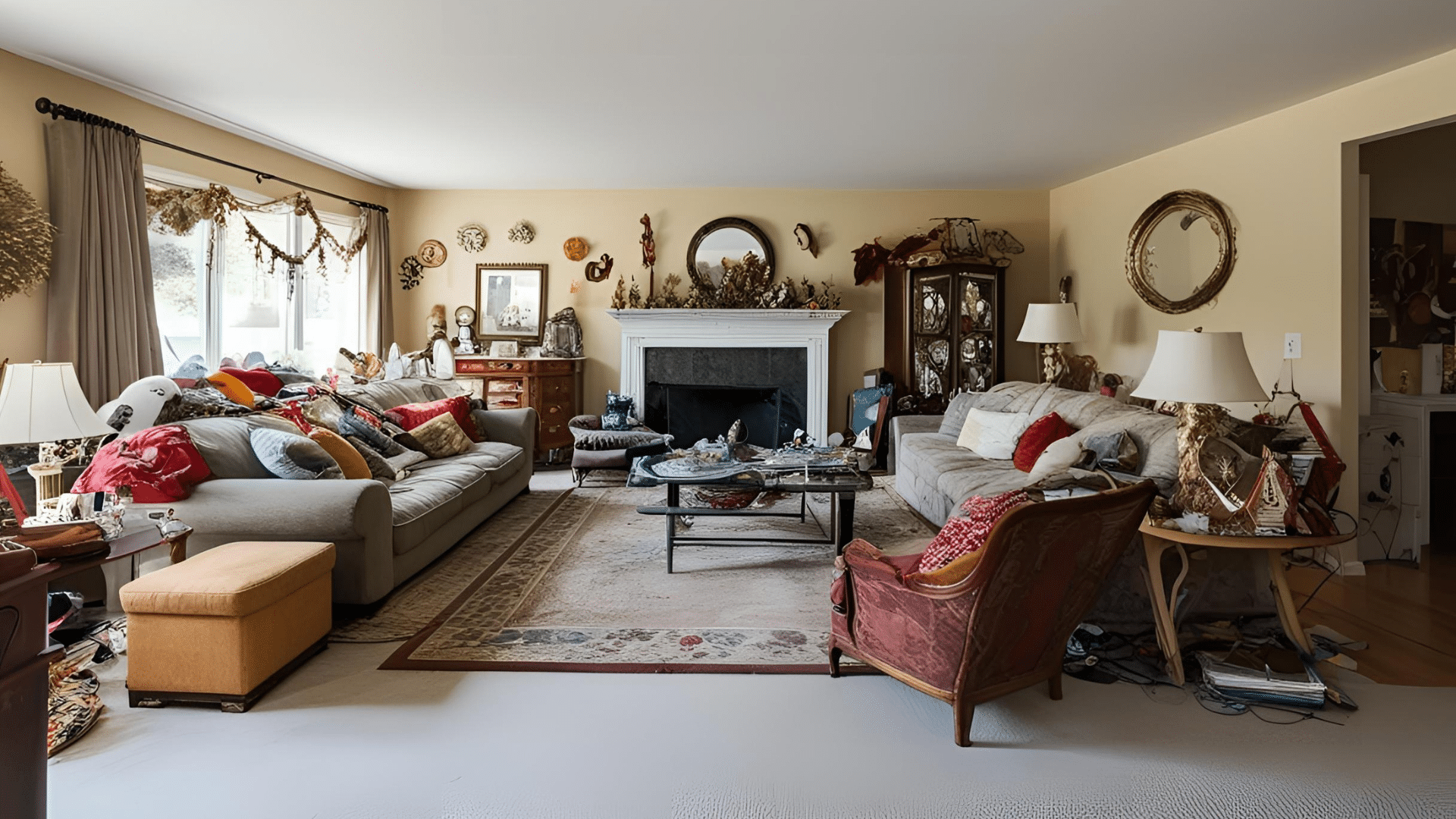
The Psychology Behind Focal Points in Design
A focal point in a room helps guide the viewer’s attention, providing a sense of structure and direction.
Psychologically, humans tend to focus on one element when entering a space, which is why creating a clear focal point is essential in interior design.
It not only enhances the overall art but also ensures that the room feels intentional and balanced.
How Focal Points Create a Sense of Order and Purpose
Focal points allow a room to feel cohesive and organized. They naturally draw the eye and help anchor the layout.
Without a focal point, a room can feel chaotic or disjointed, leaving it difficult for the eye to rest.
A strong focal element, like a statement piece of furniture or artwork, can provide purpose and direction within a space.
Common Mistakes When Rooms Lack Proper Emphasis
Rooms without a clear focal point can feel uninviting or uncomfortable.
Common mistakes include overloading a space with decorations, leaving the layout too open-ended, or neglecting to highlight key features.
This can create confusion or unease, as the room lacks a specific area for the eye to settle.
6 Powerful Ways to Create Emphasis in Your Home
1. Using Furniture as a Focal Point

Statement furniture pieces have the power to dominate a room. Choose bold, unique items that naturally draw attention, such as oversized chairs or distinctive tables.
The strategic placement of furniture can also help direct the eye to certain areas of the room.
Experiment with furniture that features unique shapes, sizes, or colors to create emphasis and make a statement in your space.
2. Creating Emphasis Through Color
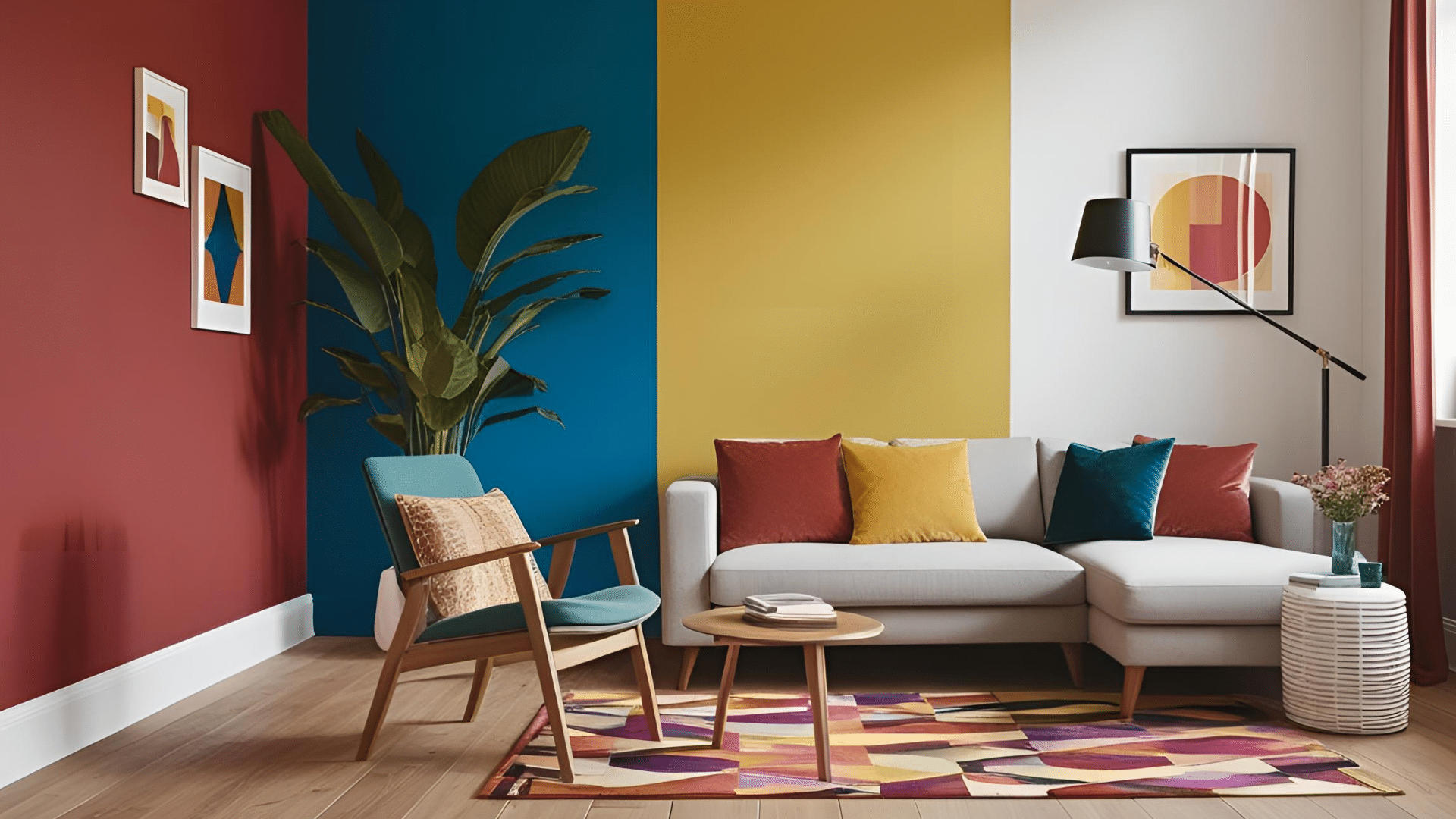
Color is one of the most effective tools for creating emphasis. Accent walls, for example, can draw attention to a specific area.
Bold and contrasting colors can be used to highlight key features.
Color psychology also plays a role, as warm tones like red and yellow can evoke energy, while cooler tones like blue and green create calm.
Using color-blocking techniques can also help separate areas and add depth.
3. Lighting as a Tool for Emphasis
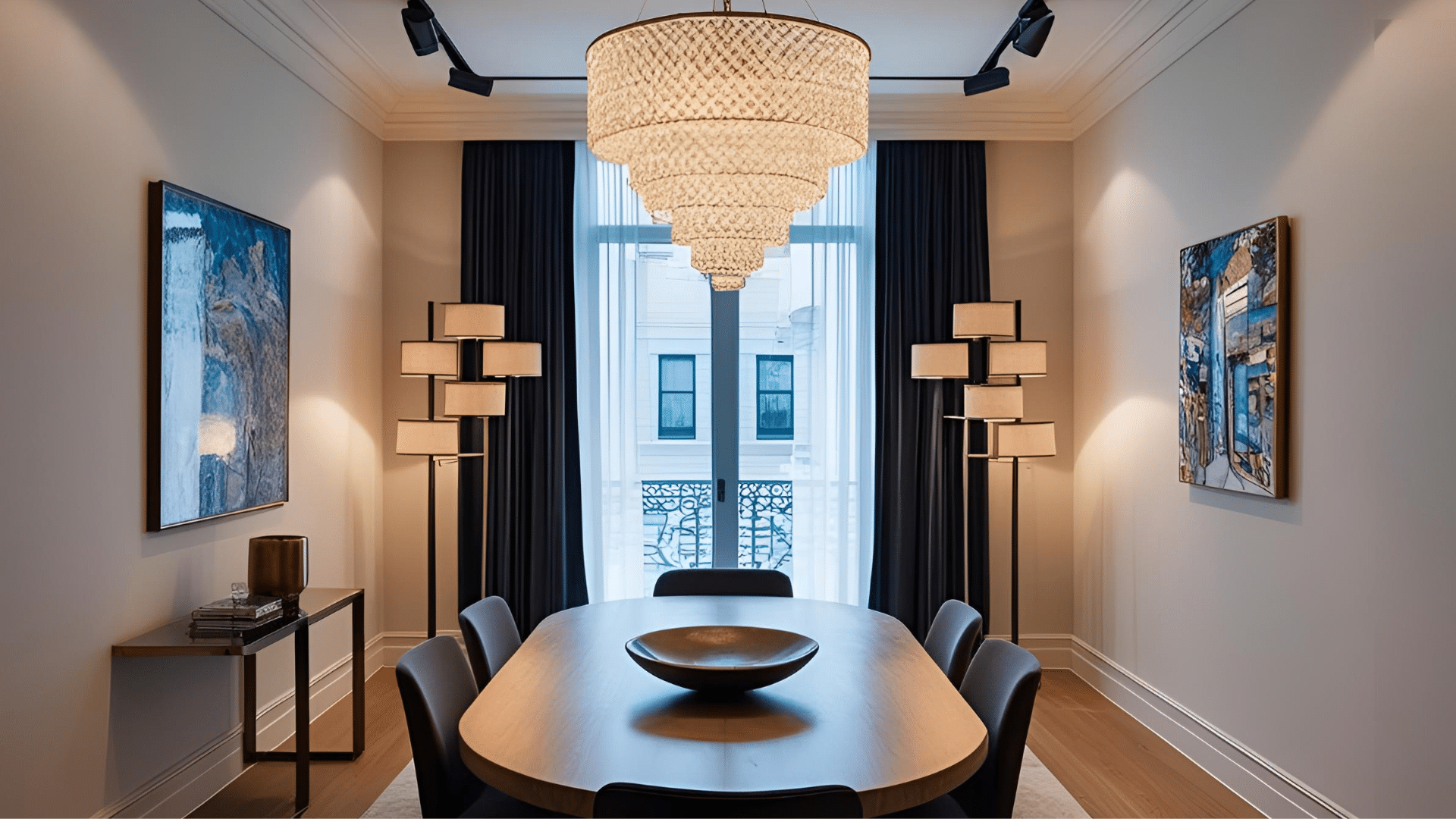
Lighting can modify a room and emphasize certain areas. Statement fixtures, such as chandeliers or pendant lights, serve as eye-catching focal points.
Directional lighting, such as spotlights or track lighting, can highlight artwork or building features.
Layering different light sources, such as ambient, task, and accent lighting, adds depth and focuses attention where you want it.
Consider natural light, too—use it to illuminate key elements of the room.
4. Texture, Pattern, and Shape
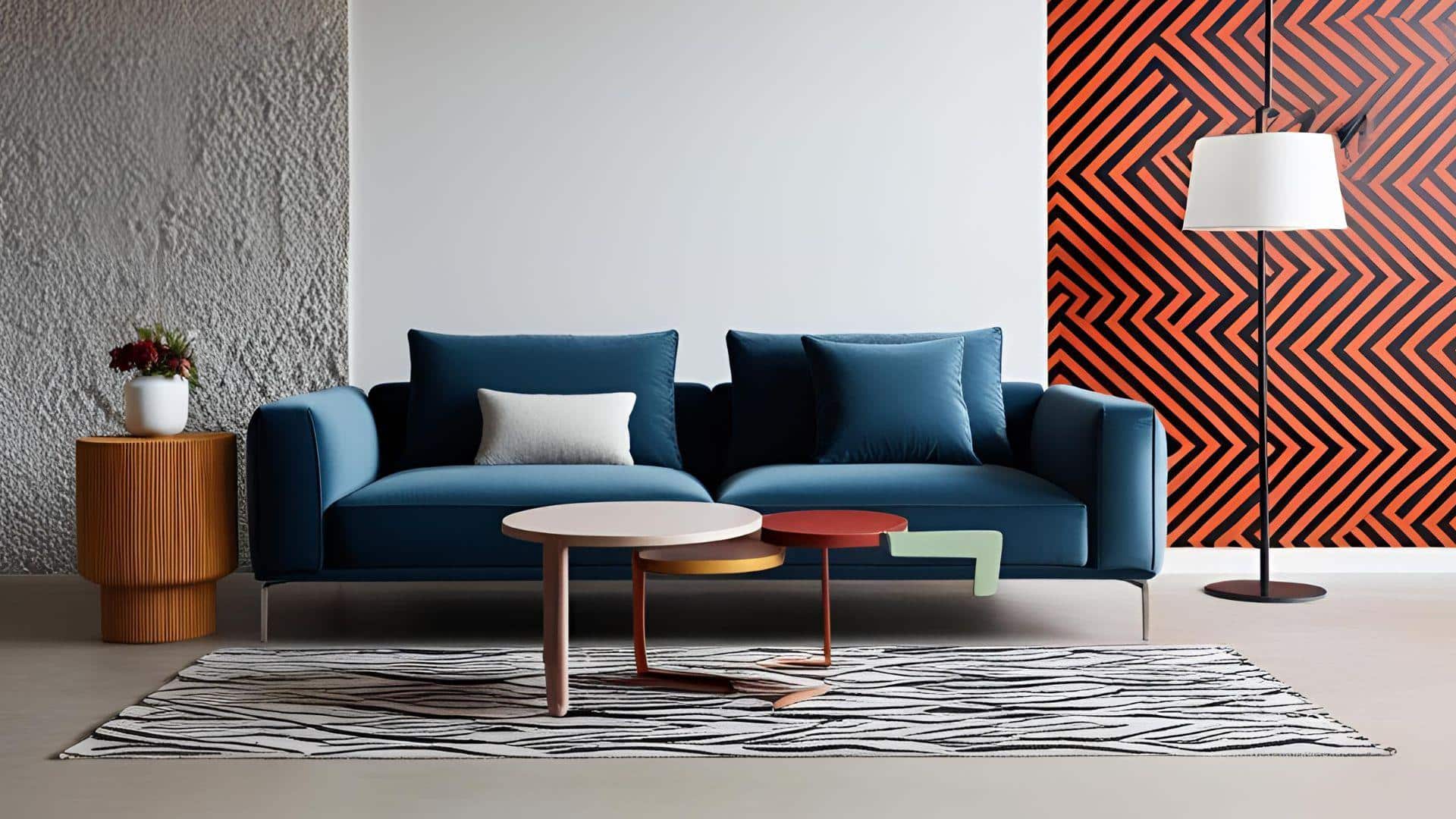
Incorporating different textures, patterns, and shapes can create emphasis through contrast.
For example, contrasting textures like a smooth, sleek sofa against a rough-textured wall can create visual interest.
Bold patterns, such as geometric or floral designs, can act as the room’s focal point.
Using unique shapes, whether geometric or organic, draws the eye and creates dynamic balance. Mixing textures adds depth and complexity to a space, highlighting certain features.
5. Decorative Accents and Accessories
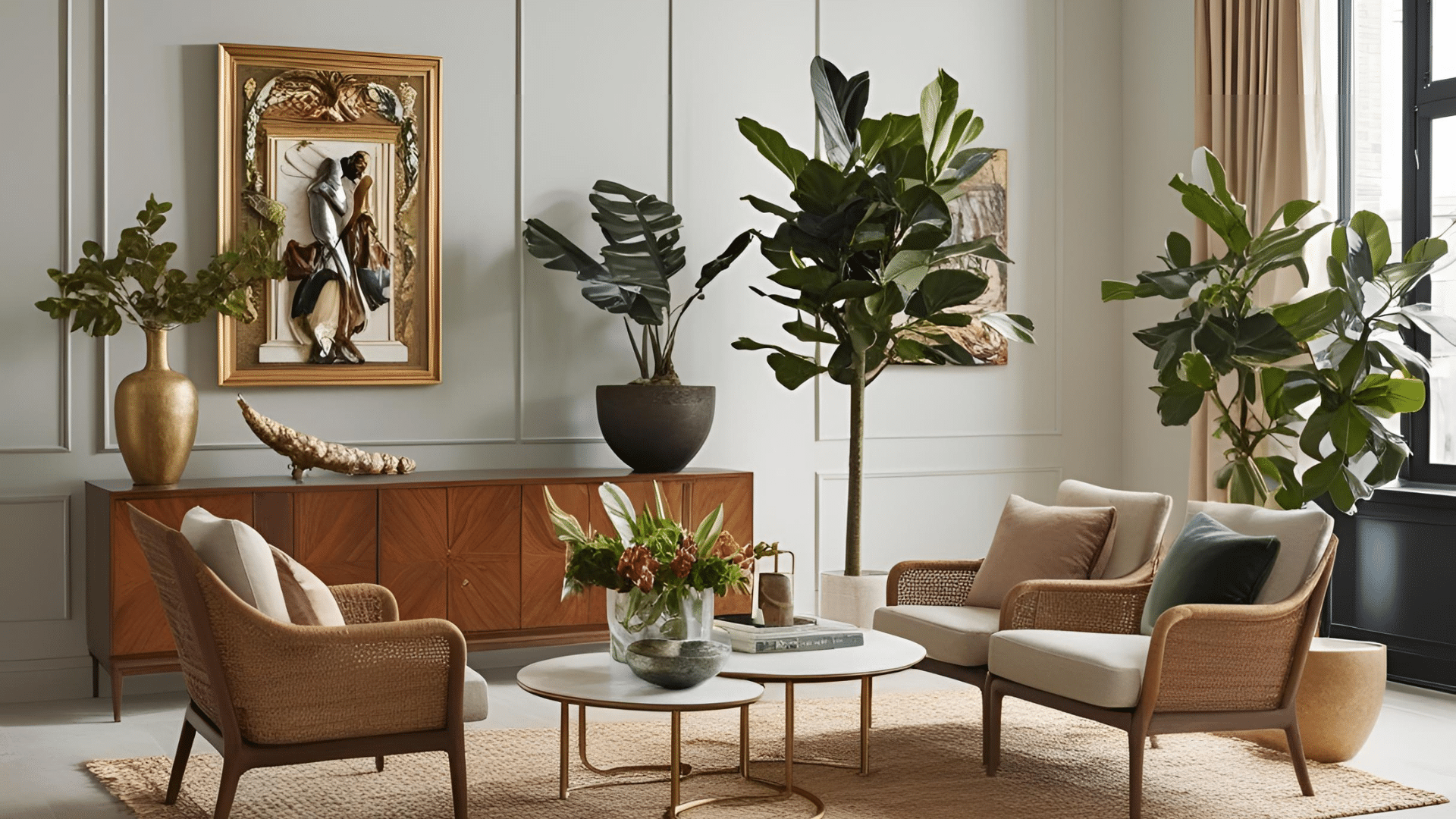
Decorative accents and accessories are essential for adding emphasis. Art pieces such as paintings, sculptures, or wall art can serve as a focal point.
Plants and natural elements, like indoor trees or flowers, bring life and attention to specific corners or tables.
Mirrors can also work wonders as statement pieces, reflecting light and creating a sense of space.
Thoughtfully displaying collections, like vases or books, adds character and direction to a room’s design.
6. Structural Elements
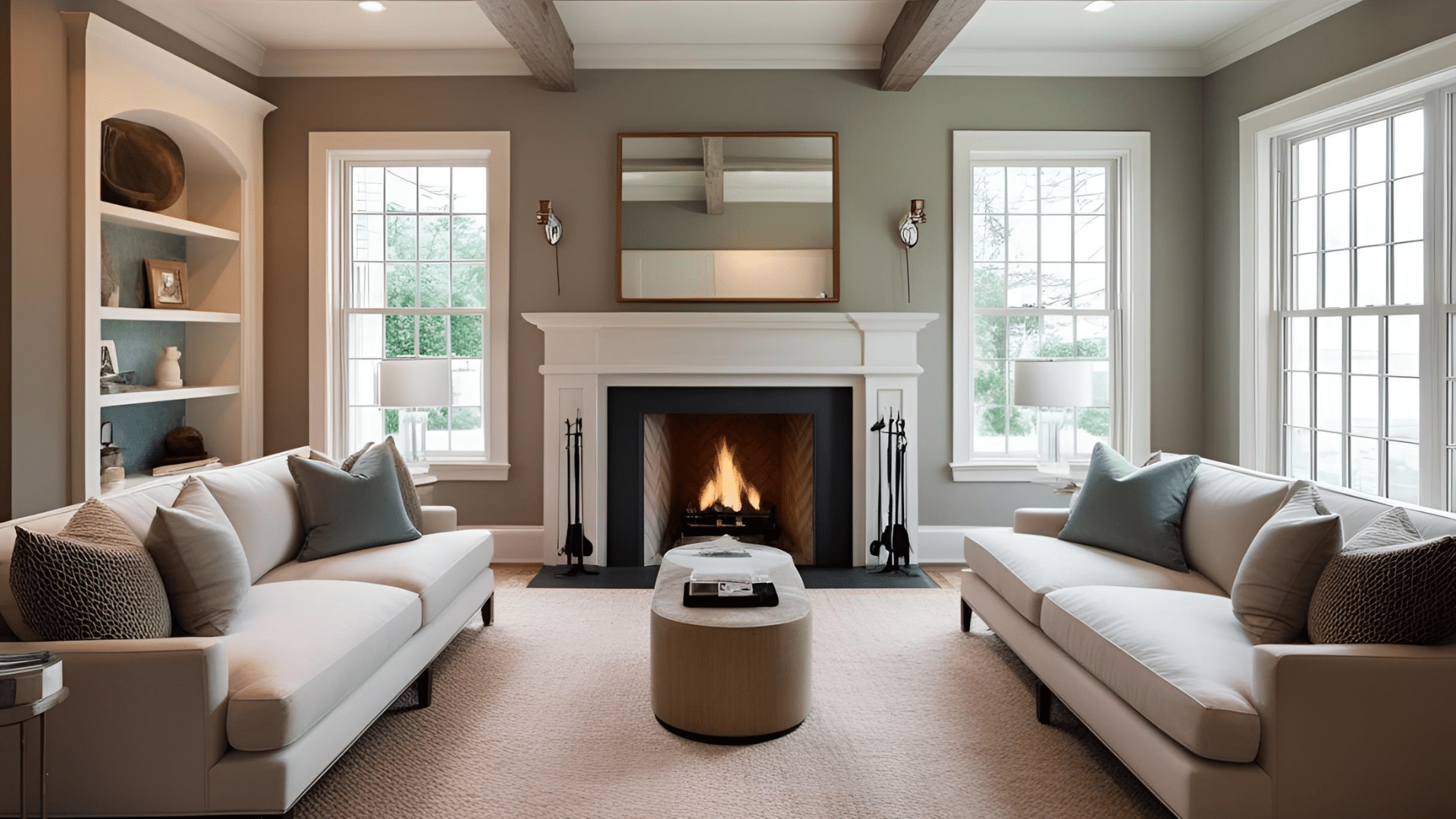
Structural features, such as fireplaces, windows, or exposed beams, can be emphasized to become focal points.
If such features are absent, adding Structural elements like an accent wall or built-in shelving can create visual interest.
Using these features to guide the eye can help balance the room and ensure it feels cohesive.
Structural details, such as molding or a grand staircase, can also enhance a space by providing a sense of structure and emphasis.
Emphasis in Different Design Styles
Modern and Minimalist Approaches to Emphasis
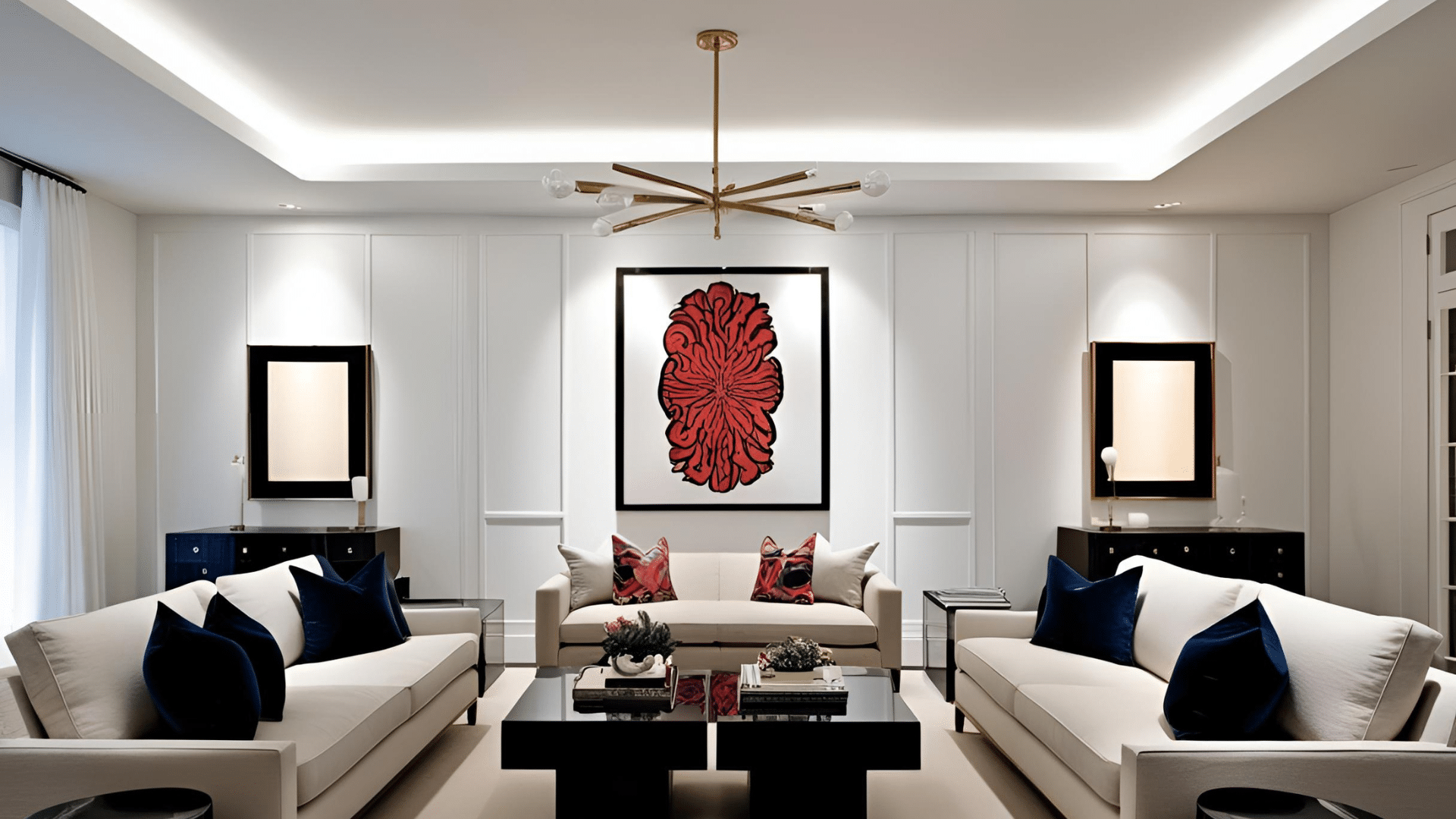
In modern and minimalist designs, emphasis is placed on simplicity and clean lines.
Focus on one statement piece, such as sleek furniture or bold art, and keep the space uncluttered.
The use of neutral colors with occasional contrast helps maintain a calm and organized atmosphere.
Traditional and Classic Emphasis Techniques
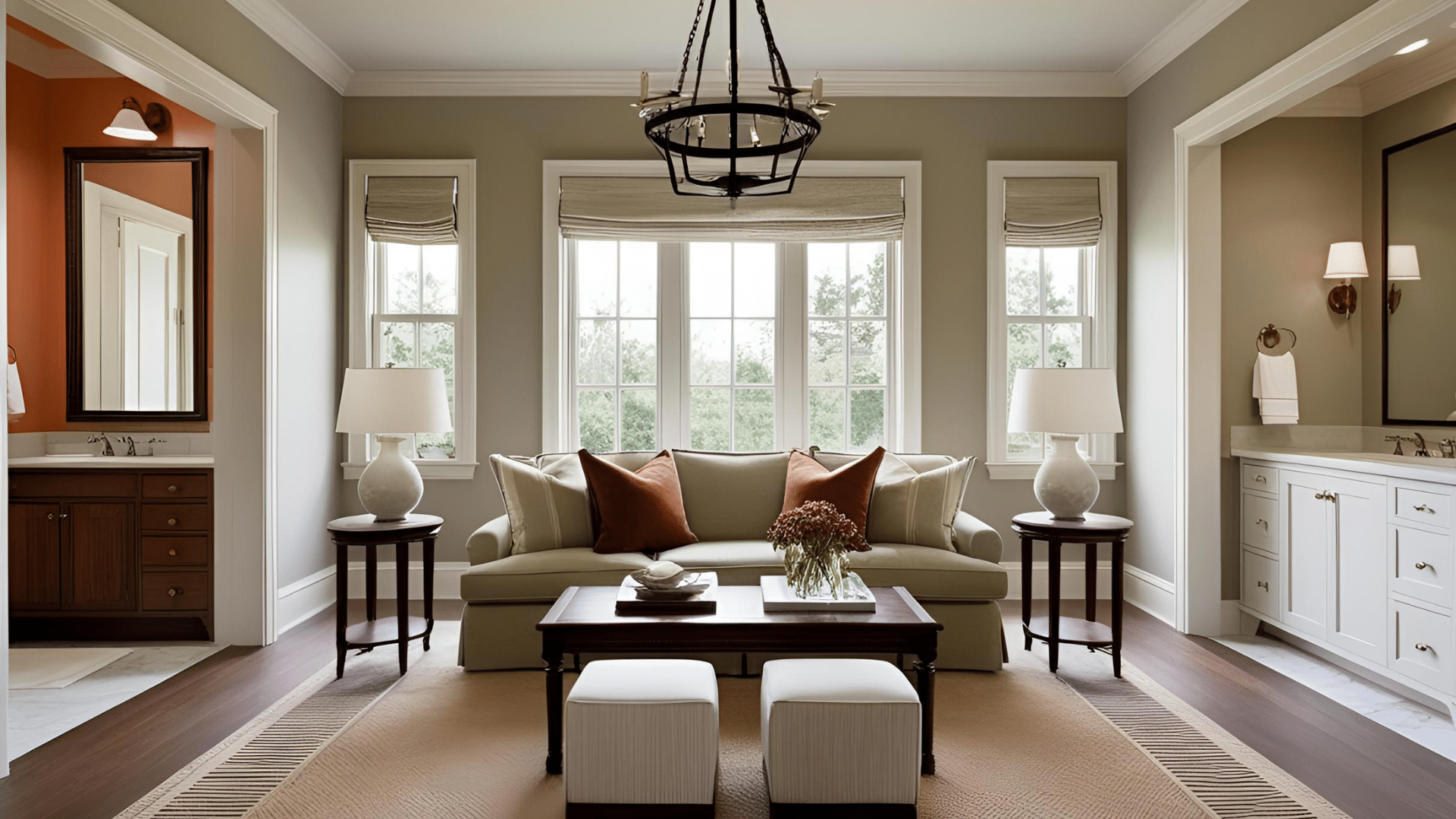
In traditional designs, emphasis often comes from symmetry, antique furniture, and elaborate decor.
Focal points like a fireplace, chandelier, or grand mirror are common.
Rich colors, detailed woodwork, and patterned fabrics draw attention to these elements while the overall space remains balanced and timeless.
Eclectic and Maximalist Methods for Creating Focal Points
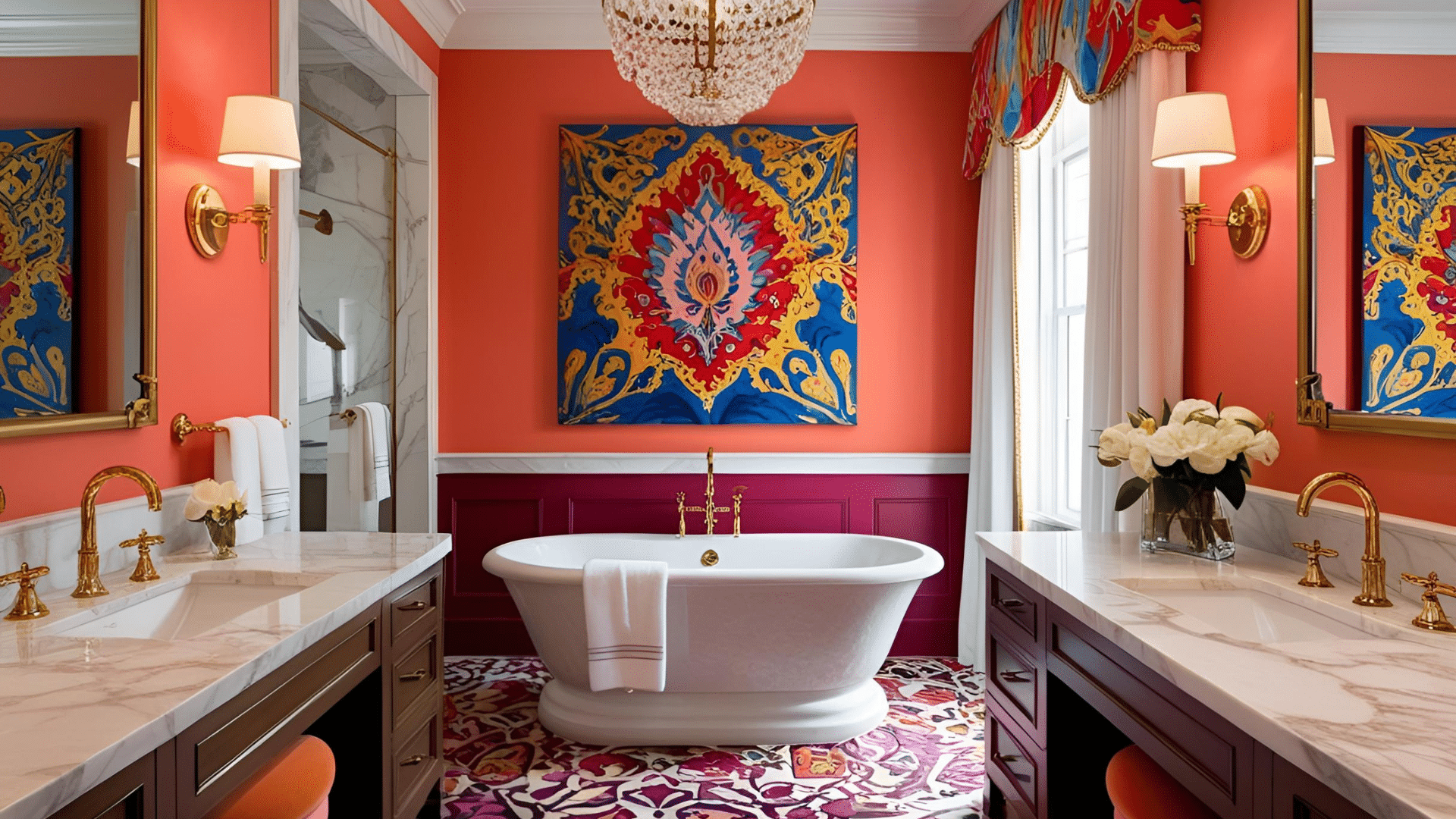
Eclectic and maximalist designs thrive on boldness and contrast.
Multiple focal points are often created through the use of vibrant colors, varied textures, and statement furniture.
Layering items and mixing styles allow the eye to move across the room, with no single focal point dominating the space but rather offering a playful, dynamic feel.
Cultural Influences on Emphasis in Design
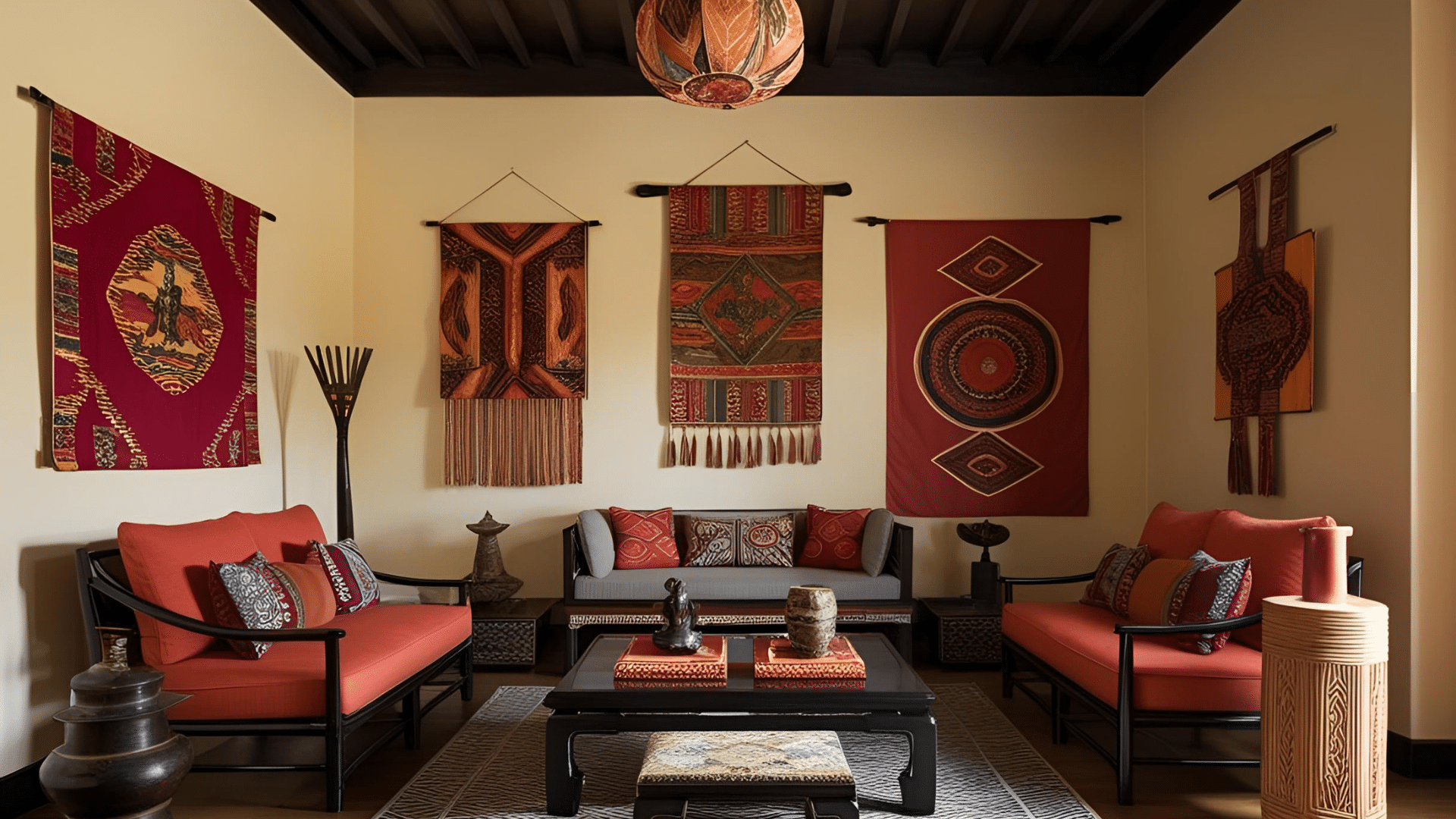
Cultural influences can shape focal points in design by highlighting specific elements from various traditions.
For example, African or Asian-inspired designs might emphasize unique artwork, textiles, or furniture.
Incorporating cultural artifacts, traditional patterns, or distinctive color palettes brings character to the space, offering depth and meaning tied to cultural heritage.
DIY Projects to Create Emphasis in Your Home
Weekend Projects to Create New Focal Points
Simple DIY projects can introduce fresh focal points in your home.
Consider creating a statement wall with bold paint, installing a feature light fixture, or building custom shelves.
These projects are easy to complete in a weekend and modify a space without major renovations.
Budget-Friendly Emphasis Techniques
You don’t need to spend a lot to create emphasis.
To make the room stand out, use budget-friendly options like adding vibrant throw pillows, creating a gallery wall with affordable art, or repurposing old furniture.
Small changes can make a big impact.
Seasonal Changes to Refresh Your Room’s Emphasis
Adjust focal points with the changing seasons to keep your space feeling fresh.
Swap out accessories, throw blankets, or rugs to reflect the current season, or switch up decor items to refresh the room’s focus and give it a new feel without major expense.
Conclusion
Creating emphasis in interior design has a lasting impact on your space, providing both artistic appeal and functional clarity.
By learning to highlight key elements like furniture, color, lighting, and textures, you can easily modify any room.
Developing an eye for natural focal points takes practice, but even small changes can make a big difference.
As you reflect on these techniques, take a moment to analyze your own space.
Which areas could use a bit more focus? What focal points could make your rooms feel more balanced and intentional?
Don’t hesitate to implement these strategies in your home. Ready to get started? Try a simple weekend project and watch your space come to life!

